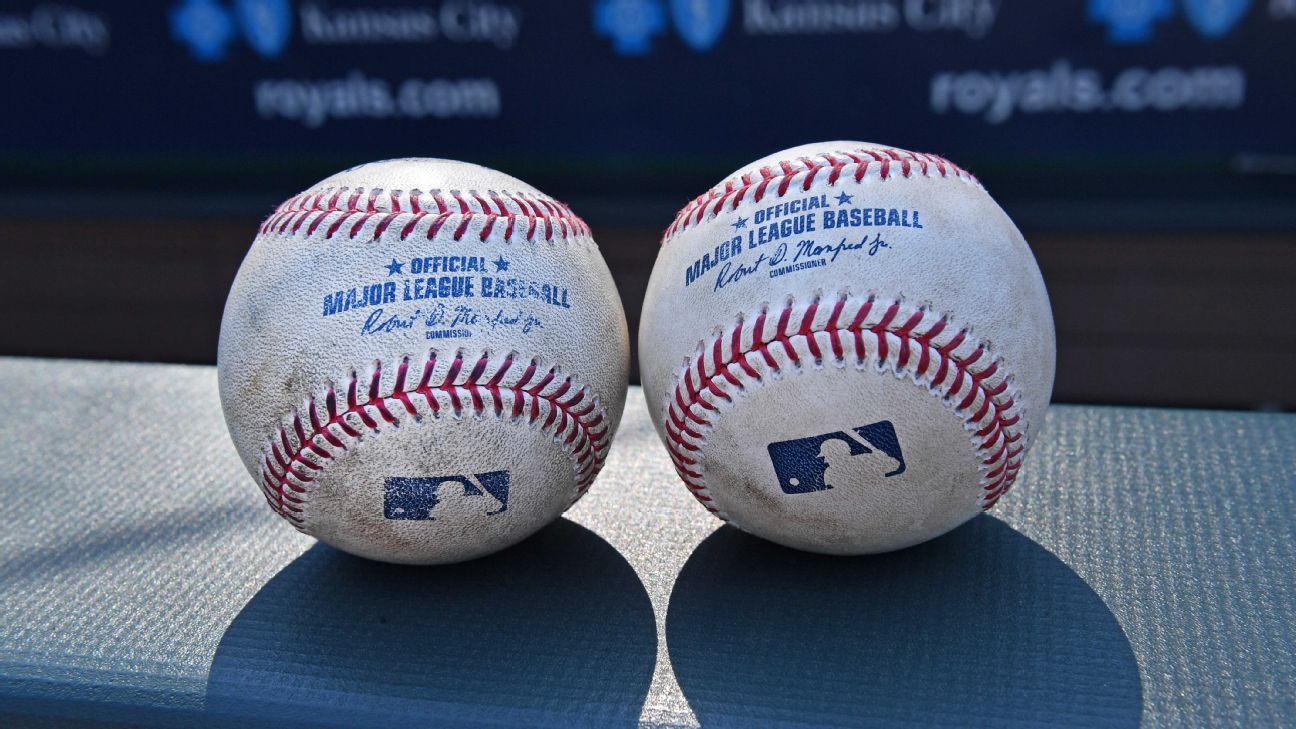
The practice of catchers using their fingers to flash a combination of signs for pitchers to decipher, a strategy that is almost as old as the sport itself, could be on the verge of becoming obsolete.
Major League Baseball will begin testing new technology that allows catchers to electronically communicate signs to pitchers at one of the lower minor league levels within the next couple of weeks, a system designed to both quicken the pace of play and suppress illegal sign-stealing methods.
A memo introducing the new system, a copy of which was obtained by ESPN, was sent to officials of the eight teams that make up the Class A California League on Friday. In it, MLB announced plans to begin testing on Aug. 3 a pitcher-catcher communication device developed by a company called PitchCom.
The system, which passed safety tests conducted at the UMass Lowell Baseball Research Center, consists of a transmitter that is worn on a catcher's wristband and two receivers that fit within the sweatband of a pitcher's cap and the padding of a catcher's helmet. The transmitter includes nine buttons to signal desired pitch and location and comes preprogrammed with English and Spanish audio tracks, though teams can also record their own. Information is passed from the transmitter to both receivers using an encrypted communication channel and played with bone-conduction technology, the memo stated.
The Cal League, or Low-A West, consists of affiliates for the Colorado Rockies (Fresno Grizzlies), San Francisco Giants (San Jose Giants), Seattle Mariners (Modesto Nuts), Oakland Athletics (Stockton Ports), Los Angeles Dodgers (Rancho Cucamonga Quakes), Los Angeles Angels (Inland Empire 66ers), San Diego Padres (Lake Elsinore Storm) and Arizona Diamondbacks (Visalia Rawhide). Using the device, which will arrive to teams beginning Monday, is optional but strongly encouraged, according to the memo.
"We believe these systems have significant long-term potential and are eager to see how they perform in game conditions over an extended period," the memo stated.
The system is merely the latest in a long list of experiments conducted throughout the minor leagues this season, all to try to increase action and ultimately shorten the time of game. At various minor league levels, MLB has experimented with increasing the size of bases, banning defensive shifts, restricting a pitcher's ability to step off the rubber, implementing an automated ball-strike system and installing a 15-second pitch clock. The pitch clock is being utilized in the Cal League, further incentivizing MLB to figure out a more efficient way to relay signs.
MLB's failure to police teams' ability to utilize game feeds in order to decipher a catcher's signs in real time was brought to light in the fall of 2019, when The Athletic first shed light on the trash-can-banging scheme utilized by the Houston Astros during their championship season. The revelations led to a series of punishments, animosity among players, distrust from fans, public criticisms of the league and whispers about other teams engaging in similar, albeit less egregious, practices.
Avoiding a similar scandal is critical for the league, but so is shortening the time of game -- 190 minutes on average this season, on pace to tie the record set in 2019 -- and eliminating as much dead time as possible.
In hopes of combating both issues, MLB has spent the past several years exploring different ways to communicate signs from catchers to pitchers without the elaborate combinations that often lead to mound visits and other delays in action. One method that was heavily explored, according to sources, was a four-button pad in front of the catcher that would deliver signs to the mound with a combination of lights that were only visible to the pitcher. Prototypes were built. But the system required internal wiring that was ultimately deemed impractical.
The system from PitchCom was presented to MLB officials in October and was introduced to a handful of Cactus League teams in the ensuing spring training. It was tested in bullpen sessions, and the league's internal memo stated that feedback was "extremely positive." Hacking the system, the company says, is virtually impossible. PitchCom uses an industrial grade encryption algorithm and transmits minimal data digitally, making it mathematically impossible for someone to decrypt intercepted transmissions, according to the company.
Some of the rules governing in-game use:
Players found to be wearing a receiver while batting will be ejected.
Only the active catcher, and no other players or coaches, is allowed to use the transmitter.
A backup transmitter is provided, but it must remain in the carrying case during games.
If players and coaches need to confer because of an issue with the device, they can notify the umpires and not be charged a mound visit.
Aug. 3 will mark the first time the system will be used in any professional game setting. The speed at which that system, or something similar, is introduced to the major leagues will depend largely on how the following eight weeks go.
"We are excited to see our PitchCom technology tested under game conditions," the company's co-owners, Craig Filicetti and John Hankins, wrote as part of a statement to ESPN. "As avid baseball fans, we saw a clear opportunity to use technology to help solve pace-of-play and sign-stealing challenges and improve the game that we love."















 Phone: (800) 737. 6040
Phone: (800) 737. 6040 Fax: (800) 825 5558
Fax: (800) 825 5558 Website:
Website:  Email:
Email: 






